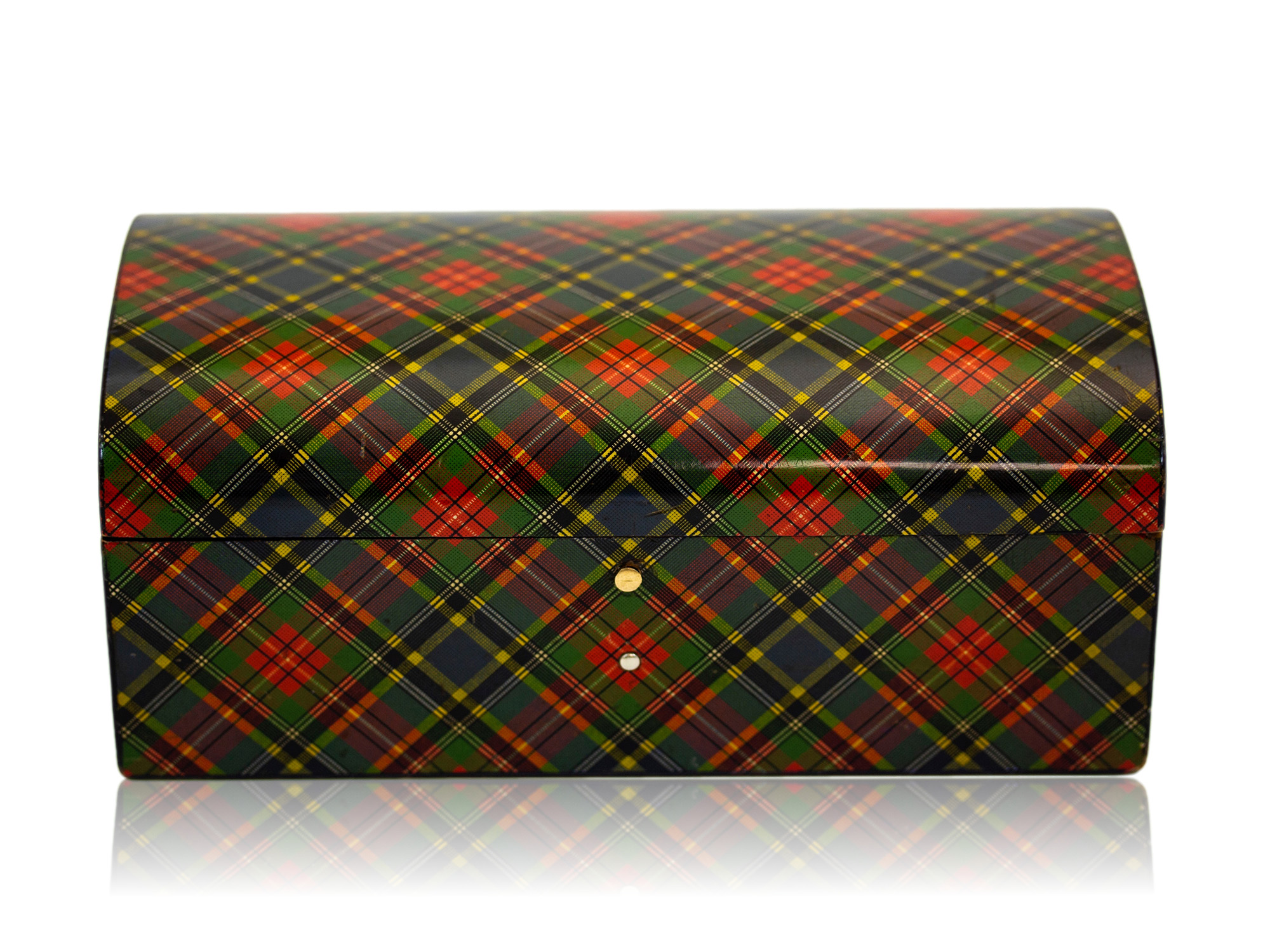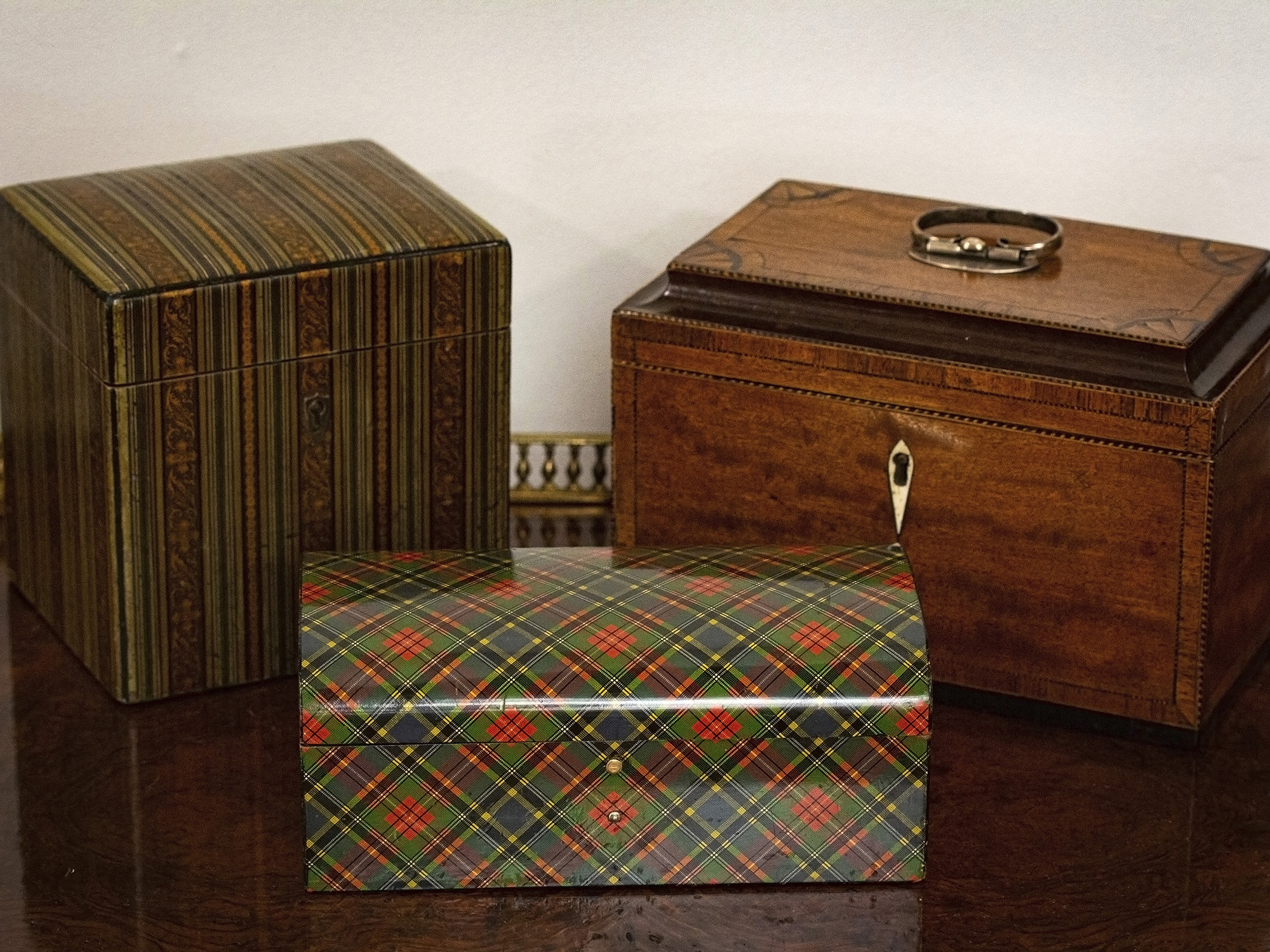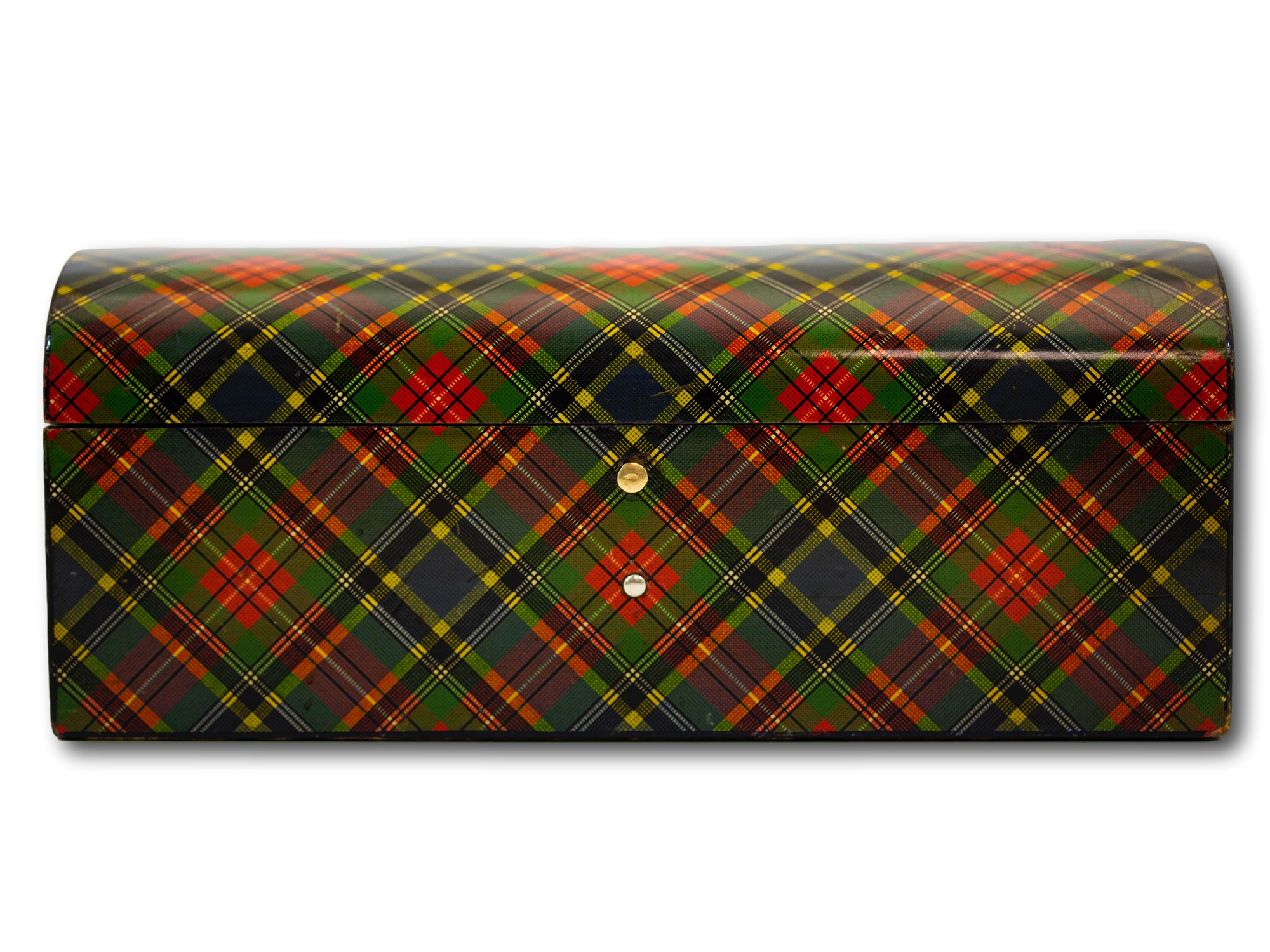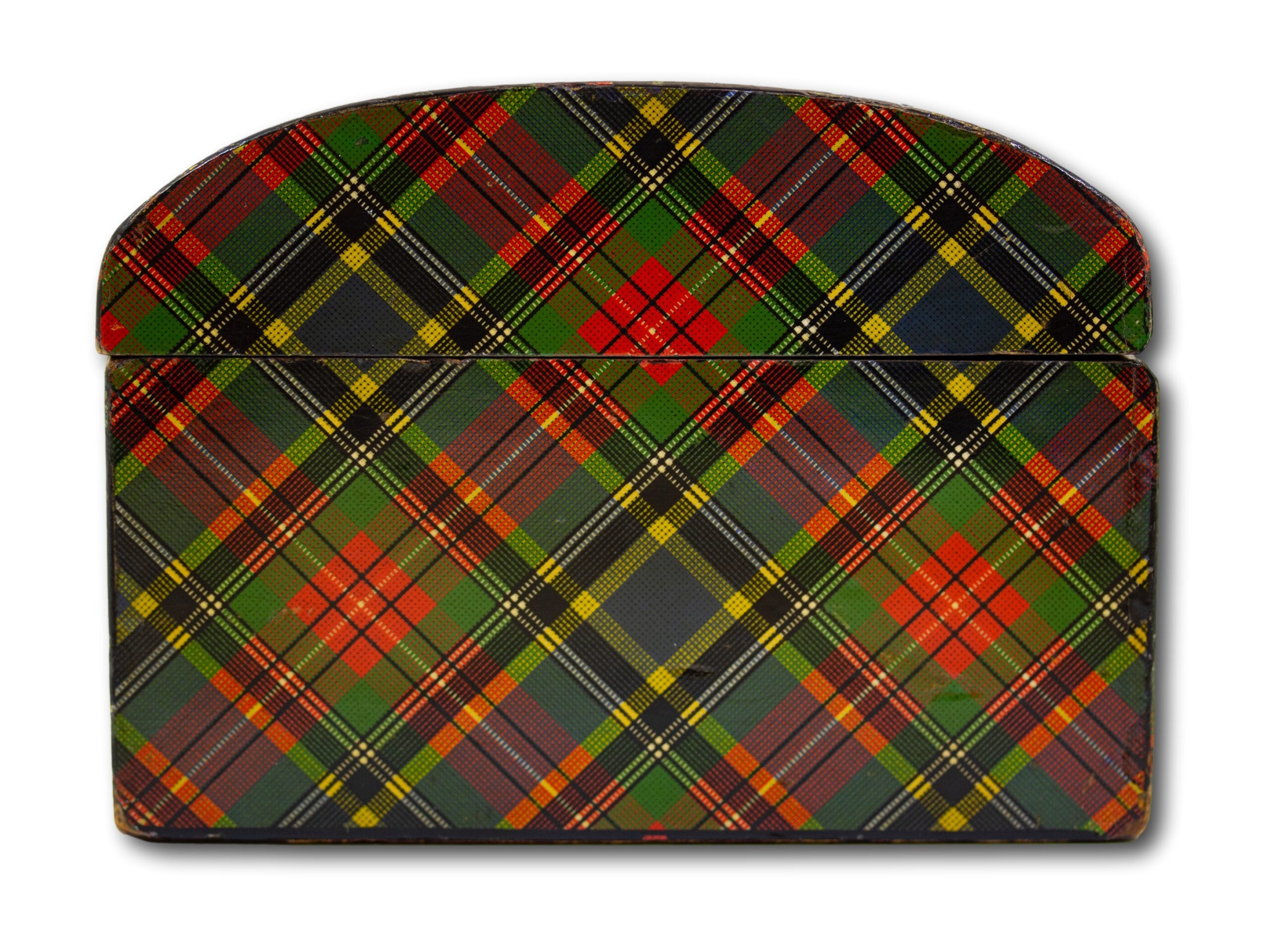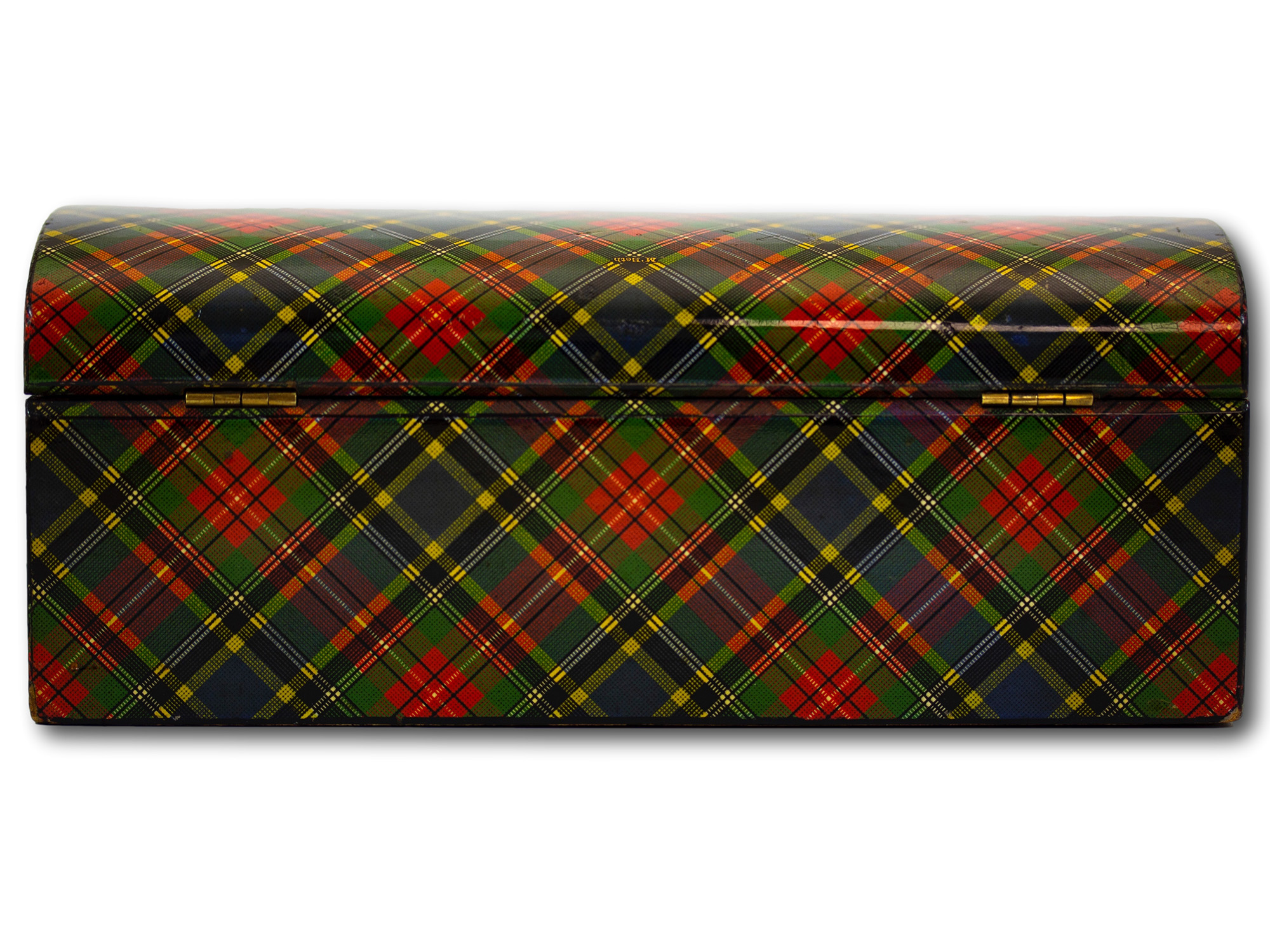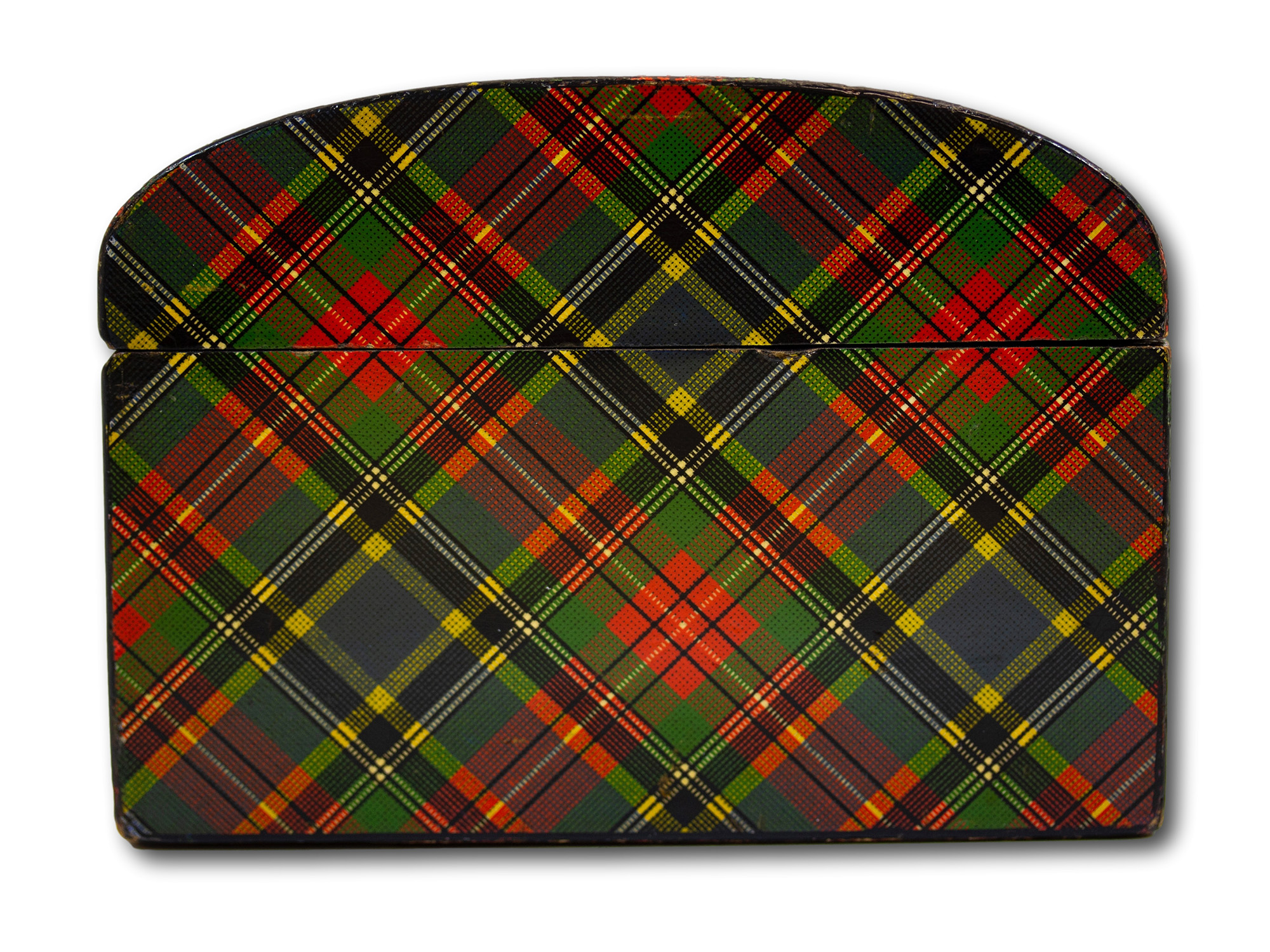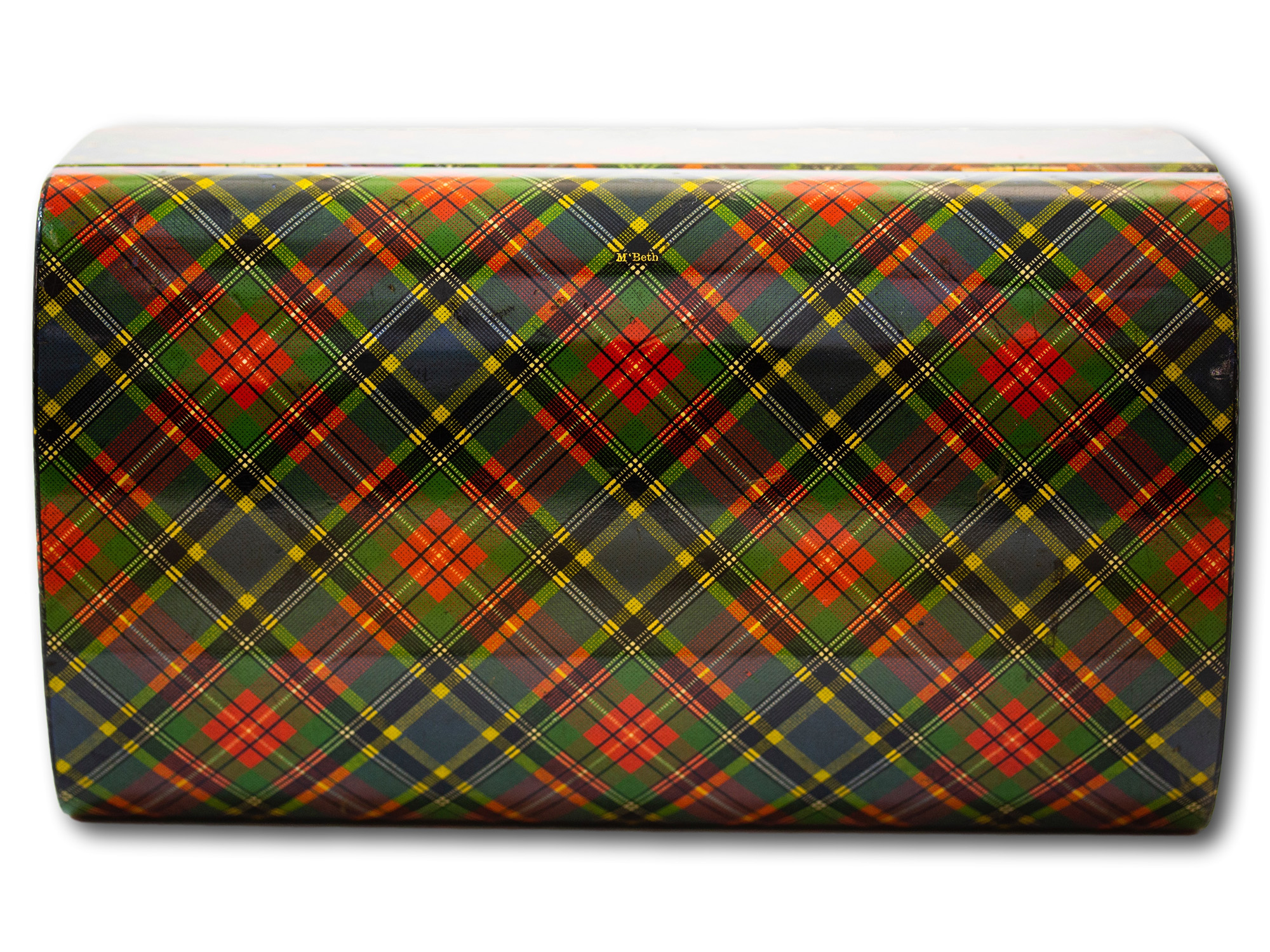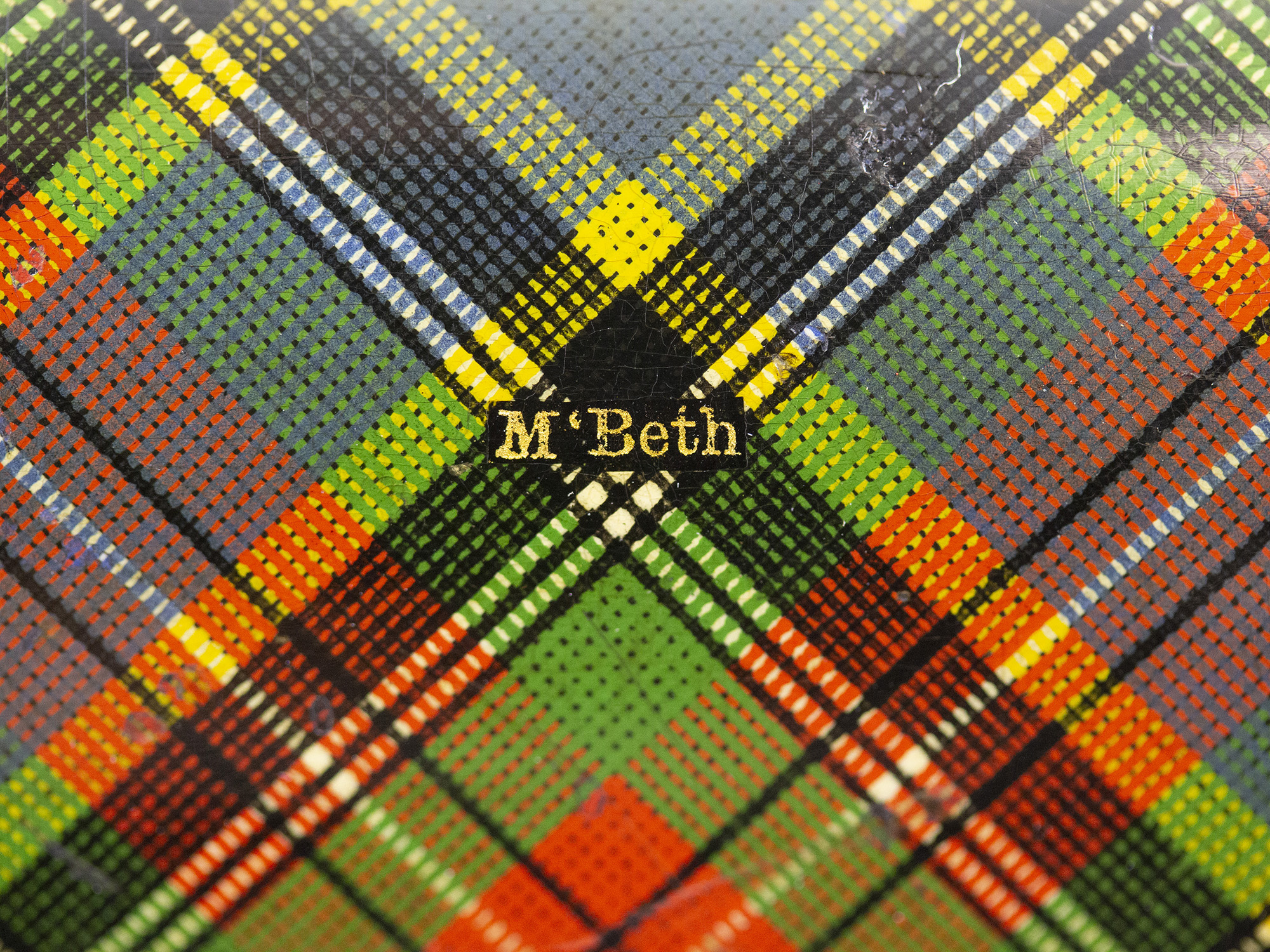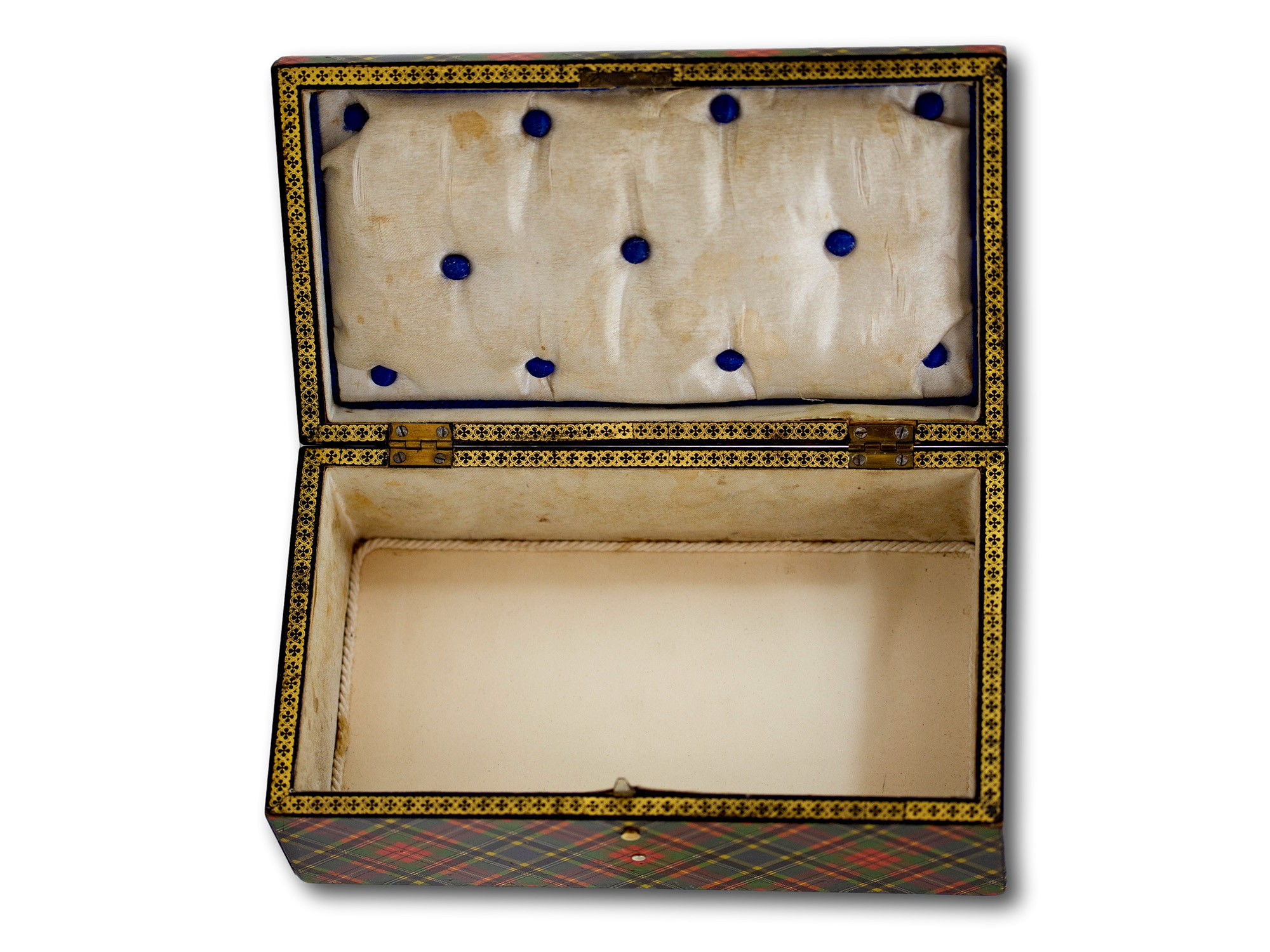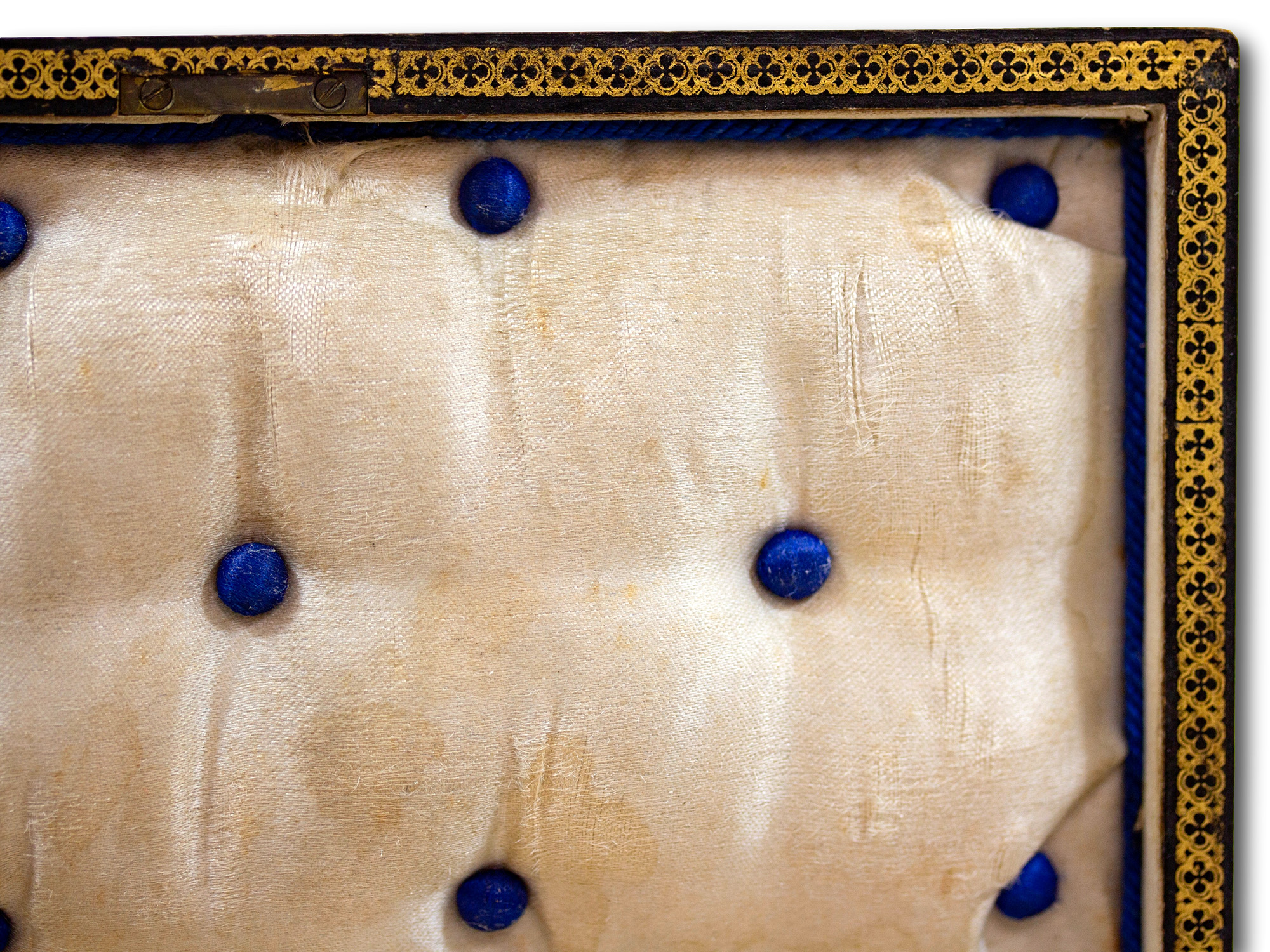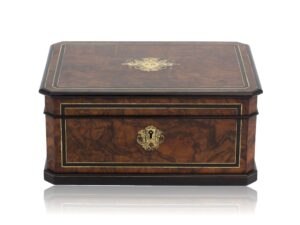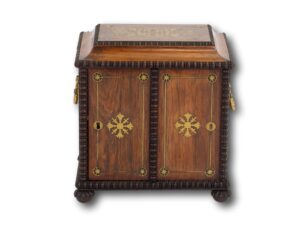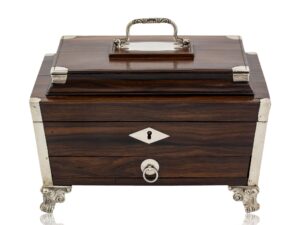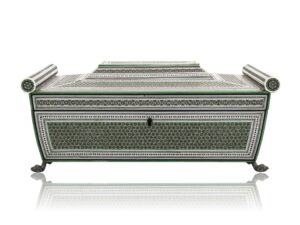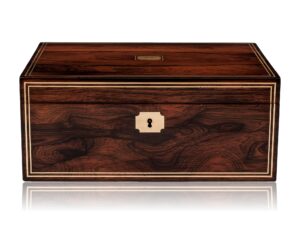Victorian Scottish Tartanware Box
£450.00
Featuring the McBeth Family Tartan From our Boxes collection, we are pleased to offer this Scottish Tartanware Box. The Box crafted from Sycamore wood of rectangular form with domed lid decorated extensively to the exterior with the McBeth family tartan... Read More
Early Victorian Tartanware Box Circa 1850

| Dimensions | 18 × 10 × 7.5 cm |
|---|---|
| Country | |
| Medium | |
| Period | |
| Year | |
| SKU | 501212 |
Description
Description
Featuring the McBeth Family Tartan
From our Boxes collection, we are pleased to offer this Scottish Tartanware Box. The Box crafted from Sycamore wood of rectangular form with domed lid decorated extensively to the exterior with the McBeth family tartan with colours or green, red, yellow and blue. When opened the box reveals the original silk lining with a tufted inside lid faced in gold tooling. The storage compartment is lined in cushioned silk with a rope work base edging the perimeter. The box is finished with a brass button catch to the front. The box dates to the middle of the 19th century during the early Victorian Era circa 1850.
Sycamore also known as Harewood is a member of the Maple family, found in Europe. It is light yellow in colour and is often a very clean wood, with a straight, fine grain. The wood is often pippy. However, these pips are usually a very similar colour to the rest of the wood making them hardly visible.
Scottish Tartan Clans there are over 7000 known Scottish Tartanware patterns on record with around 500-700 produced today.
Tartanware was a result of earlier produced Mauchline Ware which was a production of Scottish white-wood products, it was mainly manufactured from the 1820s until 1939. The production of souvenir woodware for the tourist market began in the 1790s with the snuff box industry in Ayrshire. By 1820, Mauchline ware was well established, supplying souvenirs from wood grown ‘on the Field of Bannockburn’, ‘on the Abbey Craig’, ‘on the slopes of Stirling Castle’ and made into sewing requisites, egg cups, trinket boxes and many other kinds of souvenirs, transfer printed with a line drawing of the place. The firm Smith’s who regarded as the the leading and most renowned manufacturer of Mauchline War among a few lesser known and shorter lived companies. They ranged from the basic transfer as on small vases to boxes and smaller household accessories / useable objects each piece having the view of the place of purchase. The transfer subjects ranged across Scotland and more of the British Isles to the rest of the world. As a result of the early Mauchline Ware, Tartan ware became extremely popular after W & A Smiths invented a machine for “weaving” tartan designs on paper. Fernware was then introduced in the 1870s which involved applying actual ferns to the wood which was then stippled in dark brown. The ferns were then removed and the wood varnished. Sycamore was mainly the wood of choice across the whole product range. These products were sent all over the world and today there is a fierce collectors market, especially for the rarer pieces. Sadly a fire in 1933 stopped the entire production which was never restarted and Smith’s finally closed down in 1939. Smiths held a Royal Warrant and were makers to his majesty during the 19th century.
With every purchase from Mark Goodger Antiques, you will receive our latest catalogue, a Certificate of Authenticity, detailed care instructions for your chosen piece and an independent invoice (for insurance purposes) will be enclosed. As well as being protected by a no-hassle, money-back policy, your piece will be entirely insured during the shipping process to ensure the safety of your item.
Additional information
Additional information
| Dimensions | 18 × 10 × 7.5 cm |
|---|---|
| Country | |
| Medium | |
| Period | |
| Year | |
| SKU | 501212 |
